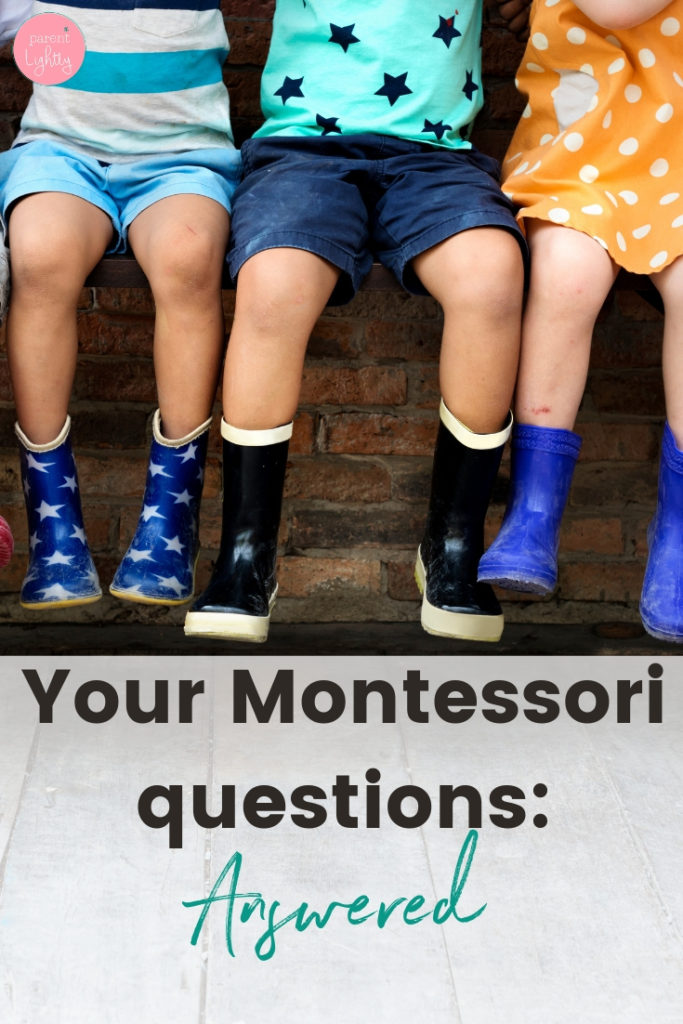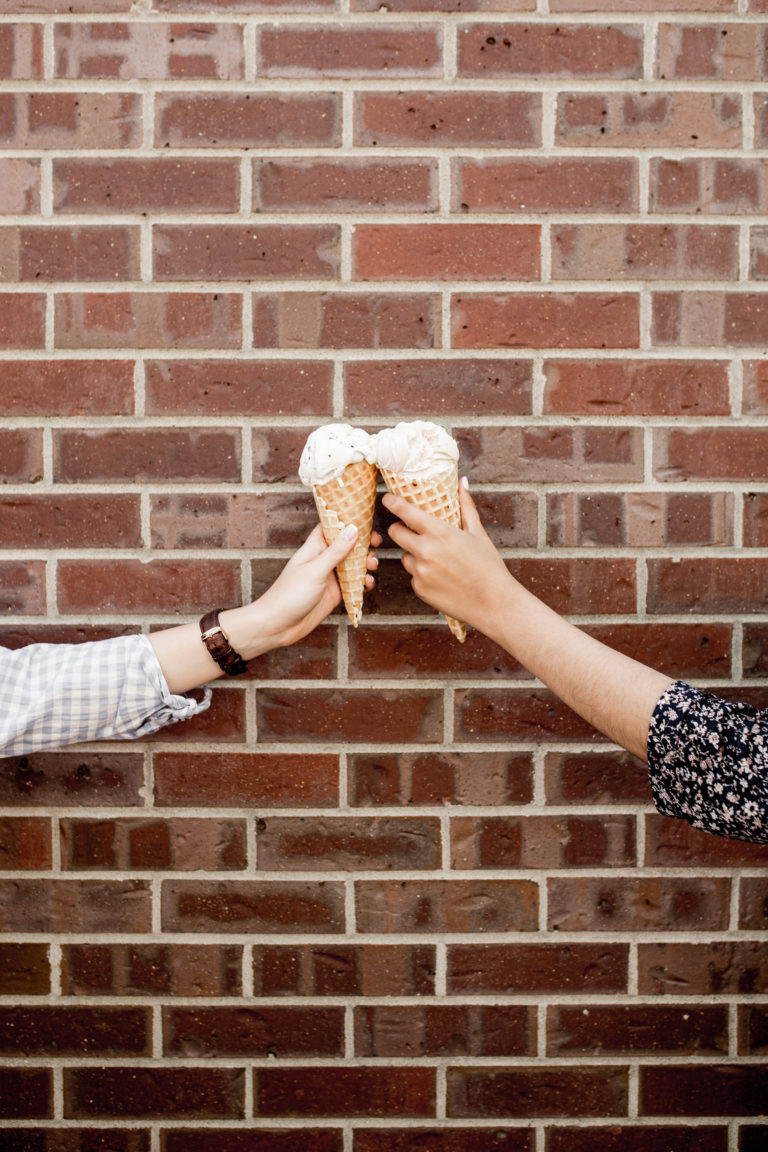The Childcare Series: All About Montessori Education from a former Montessori School Director and Mom
In this post: We welcome back Grandi of The 20 Minute Mom! Grandi is a busy mom of four. She’s all about making our mom lives easier, 20 minutes at a time. Grandi emphasizes connection over perfection every day. She’s mom to four kids: daughters who are 24 and 16 and sons who are 14 and 12!
Today Grandi shares her experience as a Montessori parent and school director. She busts all of the myths about Montessori!

Why I Chose to Become a Certified Montessori School Director and Montessori Parent
I wanted to know my children were safe and I wanted them to have the absolute best education they could have. I had heard about Montessori and was intrigued. I needed to know more. Combine that with the fact that I had a horrible experience in preschool and vowed my children would never be subject to the same treatment, so I pretty much knew I needed (and wanted) to be present.
Preschool can be a scary time – especially if your own memories include being spanked with a ruler or having your finger stuck in a cot and dragging it behind you, crying, while the teachers ignore you. True story. My own.
Fast forward to me as a mom.
I was terrified of my kids going to preschool as a result of my own experiences. Terrified. So I decided to go to school (waaaay ahead of time) and earn my degree in Montessori education. This way, I was able to have my kids with me at school and know they were safe. I could step into a classroom and give lessons, set up my home as a Montessori environment, and (BONUS!) – since I was the Director of the school, my kids had free tuition. That literally saved me $600 per week when all 3 of them were there at the same time.
Typical elements of a Montessori environment:
-
- Mixed age groups: 2 1/2 – 5 (the older children help the younger ones with their lessons)
-
- 5 curricular areas: Practical Life, Sensorial, Language, Math (up to and including algebra and geometry), and Culture (which includes all the sciences, Geography, and foreign languages).
-
- Individual work spaces on both tables and rugs
-
- A self-serve snack area where the children prepare their own snacks on their own schedule
-
- 3 hour work cycles
-
- Multiple Teachers
- A “Normalized” Environment: Quiet and Organized (children are always working and very engaged – they do not need much direction from the teachers at all)
Note from Beth: My younger daughter has been in Montessori her whole life (she’ll be 5 this year). I hear a ton of questions and concerns about the mixed age groups. In my experience, this works out just fine. As Grandi mentioned, older kids help the younger kids learn the ropes and also do their work!
I did find that, when compared to a regular daycare with more granular age groups, my Montessori kid tends to pick up all of the challenging behaviors of the ages in her class (3-5). It’s kind of funny to watch, but can be a bit frustrating. Overall, though, she’s been just fine with the age range of the class.
I also LOVE the quiet, calm environment. After seeing the chaotic classrooms at my older daughter’s traditional daycares, the Montessori class is really refreshing. When I pick up my daughter in the afternoon, the kids are usually doing their “afternoon work” individually or with one friend. They’re very purposeful and focused!
Why I Believe in Montessori Education
Contrary to what some believe, Montessori is NOT a Cult and the Children do NOT run amok learning nothing.
If you don’t know anything about Montessori, there seem to be 2 schools of thought about it. 1) it’s ‘cultish’ and has no discipline, kids are free to run wild and there’s really no curriculum, or 2) you know it’s exactly the opposite.
Montessori lessons each build on the one prior to it. A Montessori classroom (or school) is called a “Children’s House” and the children’s lessons are their “work”. It seems strange at first – kids have work? The children are proud of it and it gives them a sense of community and importance.
In a typical Montessori classroom you can find a child learning anything from pouring water to push-pinning a map of the world, to foreign languages and algebra and geometry – and this is in a 3-5 year old classroom.
Montessori is just “Daycare” – Why Do I Need to Know About It?
Fair warning: Montessori is not “just daycare”. In fact, calling Montessori “daycare” is synonymous to cursing in a Montessori environment. It’s an insult. The children are working and learning life skills as well as higher level academia – and they love it.
It is so important for parents to understand the Montessori environment prior to enrolling their children in a Montessori school. If you do not know why we teach certain things, and in what order, and what your child will be learning from, for example, transferring dry beans from one bowl to the next, then you may unintentionally inhibit their progress.
Spoiler alert: the lesson of transferring dry beans from a bowl on the left to a bowl on the right using their dominant hand teaches the following:
-
- Pincer grip – to help teach the child how to hold a writing utensil
-
- Left to right transferring – helps awaken the natural progression of left to right direction for reading and writing
-
- Control: picking up only a few beans at a time and having the grip control to not drop them.
- Responsibility: the child chooses their lesson, removes it from the shelf and carries it to their workspace, and then once the lesson is complete, the child returns the lesson in the same condition in which it was found so it is ready for the next child to work with.
This simple lesson of transferring beans prepares children for reading and writing. Who would have known something so simple could prepare your child for something so important? 🙂
Note from Beth: I think the Montessori method of using the senses to engage a child’s brain is really neat. My daughter loves the sandpaper letters – both tracing her finger along the classroom set and making her own with glue and sand. I’ve incorporated these methods at home, too!
My Experience as a Montessori Mom
I was at an advantage as a Montessori parent because I chose to become a certified Montessori teacher and then a certified Montessori school director. However, that does not mean that you would be at a disadvantage if you are not Montessori certified.
All of my kids went through Montessori school.
My daughter was reading at a 2nd grade level by the time she was 4.
My son was able to completely skip kindergarten and was doing algebra and geometry at 3 and 4.
My youngest spent the least amount of time in Montessori, unfortunately, but he still learned so much. He has a math and science brain so he was push-pinning maps of the world, assembling unlabeled continent maps, and doing long division and algebra before he ever hit kindergarten. He’s a master builder and has an architect’s mind.
I can see a correlation between their study habits, learning methods, and strengths and weaknesses and the time they spent in Montessori.
I also set up my house as a Montessori environment to support their work in school. That made a huge difference and it is really easy to do with things you already have in your house.
Montessori Questions?
My husband jokingly calls Montessori “the M word” because once I get started talking about it I just can’t stop. If you have any questions on Montessori education, if it’s right for your child, or how to set up a Montessori environment, I encourage you to send me an email at grandi@the20minutemom.com and we will chat!





